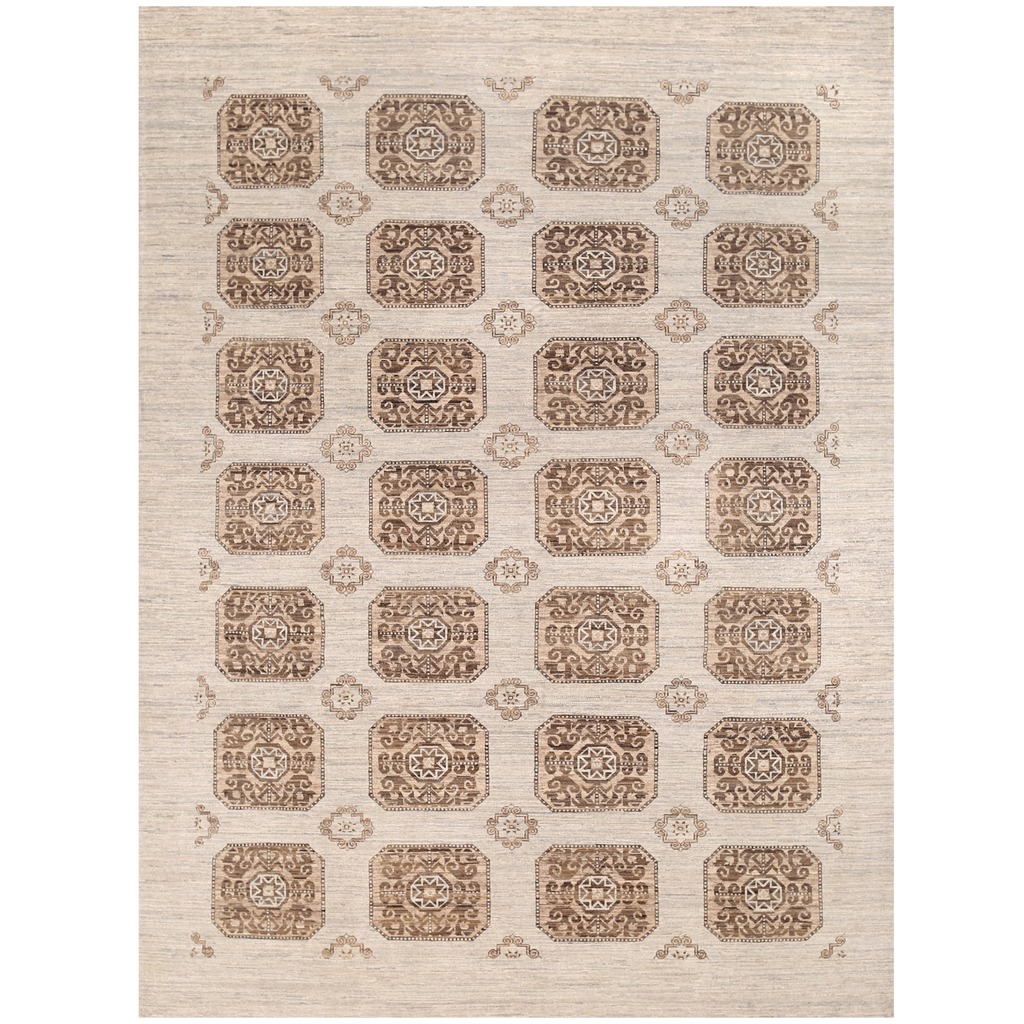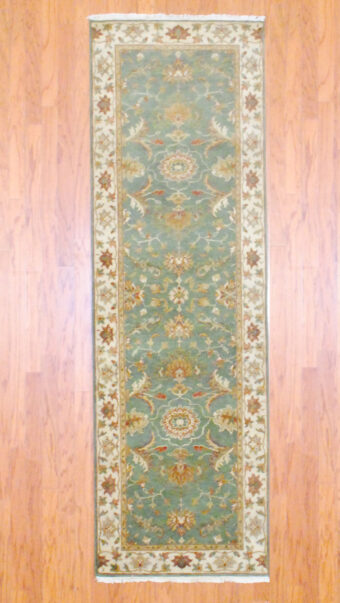Description
Transitional Turkoman rugs differ from the usual centuries-old designs through color choice and typically the lack of an outside border. The transitional design take the motifs and designs of a traditional carpet but update it for today’s trends – they are woven in either muted, modern gray and brown palettes, or in vivid neon shades of blue, green, orange, and pink, instead of the usual dark coppery red. They adhere to the ancient elephant foot pattern with repeated rows of medallions. The effect is beautiful and updates these authentic traditional designs. The vegetable dyes most commonly used are madder, the root of a spindly bush, which is used to create a red color, walnut peel for dark brown, pomegranate peel for light brown, and sparak, which is a wildflower from the steppes, is used for yellow. The process of making a rug includes cleaning, washing and dyeing the wool which is sourced from local villages.
Herat Oriental works with over 2,000 village weavers to create beautiful, authentic, handmade rugs. The majority of the weavers are women, who live in the villages of Afghanistan, Pakistan and India. As we grow, we are able to create more jobs for female weavers who otherwise would not have the opportunity to do so. The community also thrives from rug weaving as the local farmers benefit from wool sales, and the local artisans create natural and vegetable dyes for the weavers to use in their designs. Due to the handmade nature of our rugs, the size may vary from as advertised by 3-4 inches. Regular vacuuming and annual professional cleaning will keep your rug looking new for years to come.




